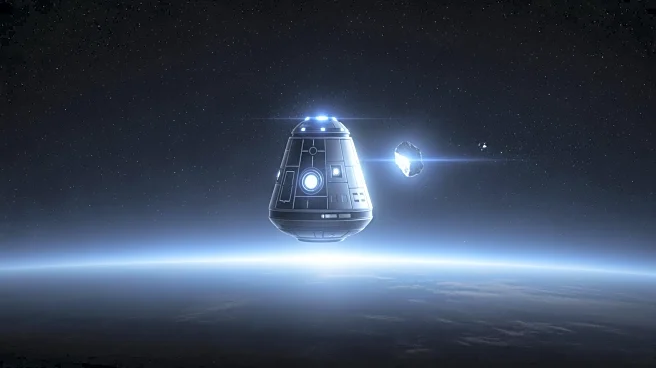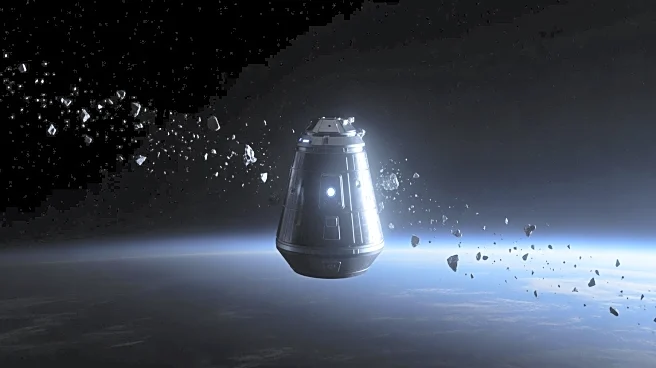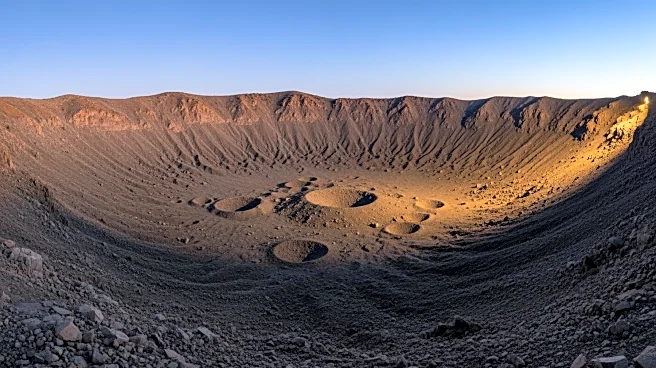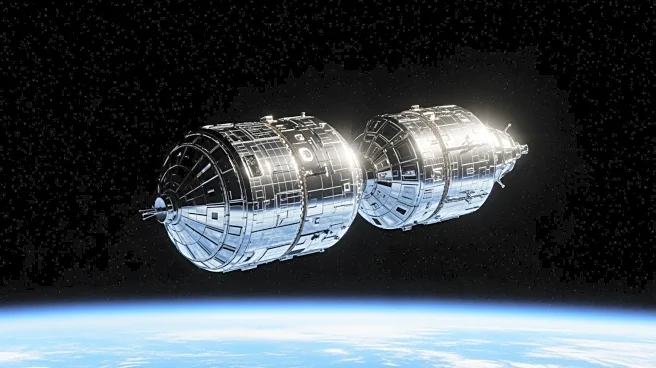What's Happening?
China's Chang'e-4 mission, which landed on the moon's far side in January 2019, has revealed groundbreaking data about the moon's subsurface. Using the Yutu-2 rover equipped with Lunar Penetrating Radar (LPR), scientists have mapped over 1,000 feet of
lunar geology, uncovering layers of volcanic rock, dust, and impact craters. This technology sends radio signals deep into the moon's surface, providing insights into its complex volcanic and impact history. The findings include five distinct layers of volcanic rock, remnants of ancient eruptions, and an impact crater buried beneath the surface. These discoveries offer a comprehensive view of the moon's geological history, stretching back billions of years.
Why It's Important?
The Chang'e-4 mission's discoveries are significant for understanding the moon's geological evolution and its history of volcanic activity and impact events. This information is crucial for future lunar exploration and potential colonization efforts, as it provides insights into the moon's resources and stability. The detailed mapping of the moon's subsurface can inform the selection of landing sites for future missions, ensuring safety and maximizing scientific returns. Additionally, understanding the moon's volcanic history helps scientists draw parallels with Earth's geological processes, contributing to broader planetary science research. The mission underscores China's growing capabilities in space exploration and its contributions to international scientific knowledge.














